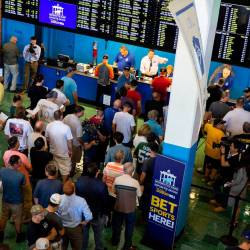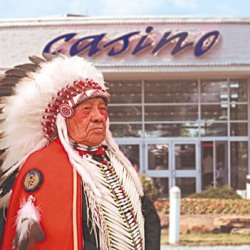Macau and Vegas: A Tale of Two Cities

Macau and Las Vegas are the two biggest gambling destinations in the world, with their annual revenues worth around $30 billion and $6 billion, respectively. In other words, Macau’s market is currently around six times bigger than its US counterpart, and their relative difference was evident once more in the latest monthly revenue figures released by the resorts’ individual regulating agencies over the past few days.
Macau
In November, Macau‘s casino market generated $2.9 billion in revenue, up by 23% compared to the same month in 2016. The impressive figure follows an equally stellar October in which revenues had increased by 22% to $3.3 billion year-on-year, with the two results completing five straight months in which Macau’s gross gaming revenue (GGR) have exceeded the forecasts provided by market analysts.
Moreover, Macau’s revenue tally for the first 11 months of 2017 is now currently higher by 19.5% versus the same period of time a year earlier, with the island resort’s incredible y-o-y monthly winning streak dating back 16 months to August 2016. Prior to that date, Macau’s casinos had suffered a 26-month losing slump, but the cause of the decline was more a result of an anti-corruption and money laundering crackdown orchestrated by the Chinese government, rather than the country’s only legal gambling resort declining in popularity.
The government has recently started to ease back on its campaign, though, and consequently Macau is experiencing a surge in its business derived from VIP gamblers and high spending casual punters, who now feel more secure about returning to the gambling hub. Commenting upon the shifting trend towards “better quality gaming customers”, Union Gaming Securities Asia analyst, Grant Govertsen, referred to allocation of the 37,000 hotel rooms currently available on the island, stating:
“In other words, lower-quality visitors are generally being replaced by higher-quality visitors [mostly due to] a greater number of hotel rooms available to marketing teams that can then be allocated to high quality players.”
Las Vegas
Unlike China where legalized gambling is restricted to just Macau, Las Vegas is just one of numerous resorts offering gambling across the state of Nevada. Nevertheless, the Las Vegas Strip generally accounts for around half of all gambling revenues produced in the state, which comes to around $6 billion per year considering the state’s whole gambling market was worth $1.1 billion in 2016.
In October, Las Vegas subsequently generated $528.7 million in revenue, with that amount marking a 6% fall, or $34 million less compared to the same month last year. The Silver State as a whole saw its combined gambling revenues relatively flat at $988.8 million in October, with the Strip’s decline mostly due to a number of extreme factors.
One of those is the unusually difficult year-on-year comparison in which revenues soared by 14% back in October of 2016. The other is the horrific shooting incident which took place in Las Vegas at the beginning of the month in which a crazed gunman killed 58 people and wounded another 500 after firing at a crowd from his hotel room at the Mandalay Bay.
While the number of tourists later traveling to Las Vegas by airplane was not too badly affected, it appears many people intending to take a road trip to Vegas subsequently decided to forgo their visits. The discrepancy is because it is easier to cancel a road trip than one by air once a reservation has been made, and commenting upon the development, Kevin Bagger, Executive Director of the LVCVA Research Center, stated:
“Yes, I believe the shooting did have some effect on the leisure side (of the market), specifically the leisure drive side, because at the same time we had strong convention business.”
Overall, visitor numbers were down by 4.2% to 3.6 million people in October, according to information released by the Las Vegas Convention and Visitors Authority. From that tally, passengers arriving at McCarran International Airport increased by 1.5%, and convention attendance by an impressive 35.9%, while daily auto traffic saw a 1.6% decline, and hotel occupancy a 2.7% fall.
Finally, Las Vegas has changed its gambling business model over the year to one which focuses on the city becoming more of an all round tourist destination. Developments have progressed successfully in this direction, too, and in 2016 the 273 casinos spread out across Nevada collected more than $25 billion in revenue, of which $10.76 billion was derived from gambling, representing just 42.6% of total revenue.







